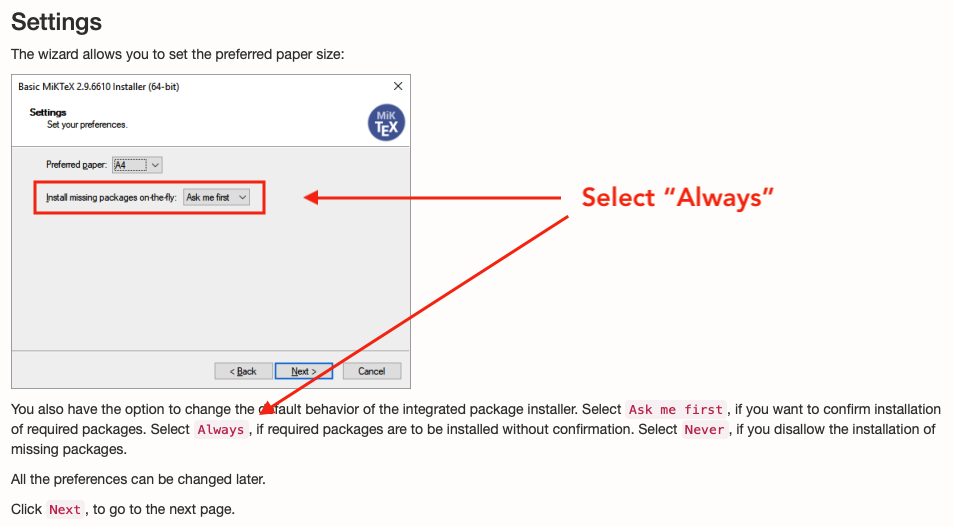EDH 7916: Contemporary Research in Higher Education
Spring 2023
A course in quantitative research workflow for students in the higher education administration program at the University of Florida
Overview Course information Meeting location Software Schedule Lessons Assignments Questions Past courses About
Software installation
Getting started
This course requires you to install a few bits of software on your computer. Specifically, you need:
- R
- RStudio
- git
- LaTeX
These instructions should help you find and download what you need. You do not need to use this guide, but it may help, particularly if you aren’t used to downloading and installing open source software.
I’ve done my best to include screenshots of each step or provide links to external sites that already have excellent instructions (e.g., git). One snag, however, is that while some in the class may use Windows/PC, others use Apple/MacOS (I’m making the assumption that no one is using Linux — if you are, you probably don’t need these instructions!). I personally use MacOS. This means that some of the screenshots are based on what I see as a Mac user on the software websites. But where I can, I show sections for MacOS and Windows downloads.
I also can’t walk you through each step of the installation once you’ve downloaded the correct files, again, because operating systems differ. That said, he good news is that with only one exception (sorry Windows users!), you should be able to install all software using the default process like you do with most other software.
Installing R
First things first, we’ll get R, which you can find at https://cran.r-project.org. Depending on your operating system (OS), you’ll click one of the following links at the top of the home page.
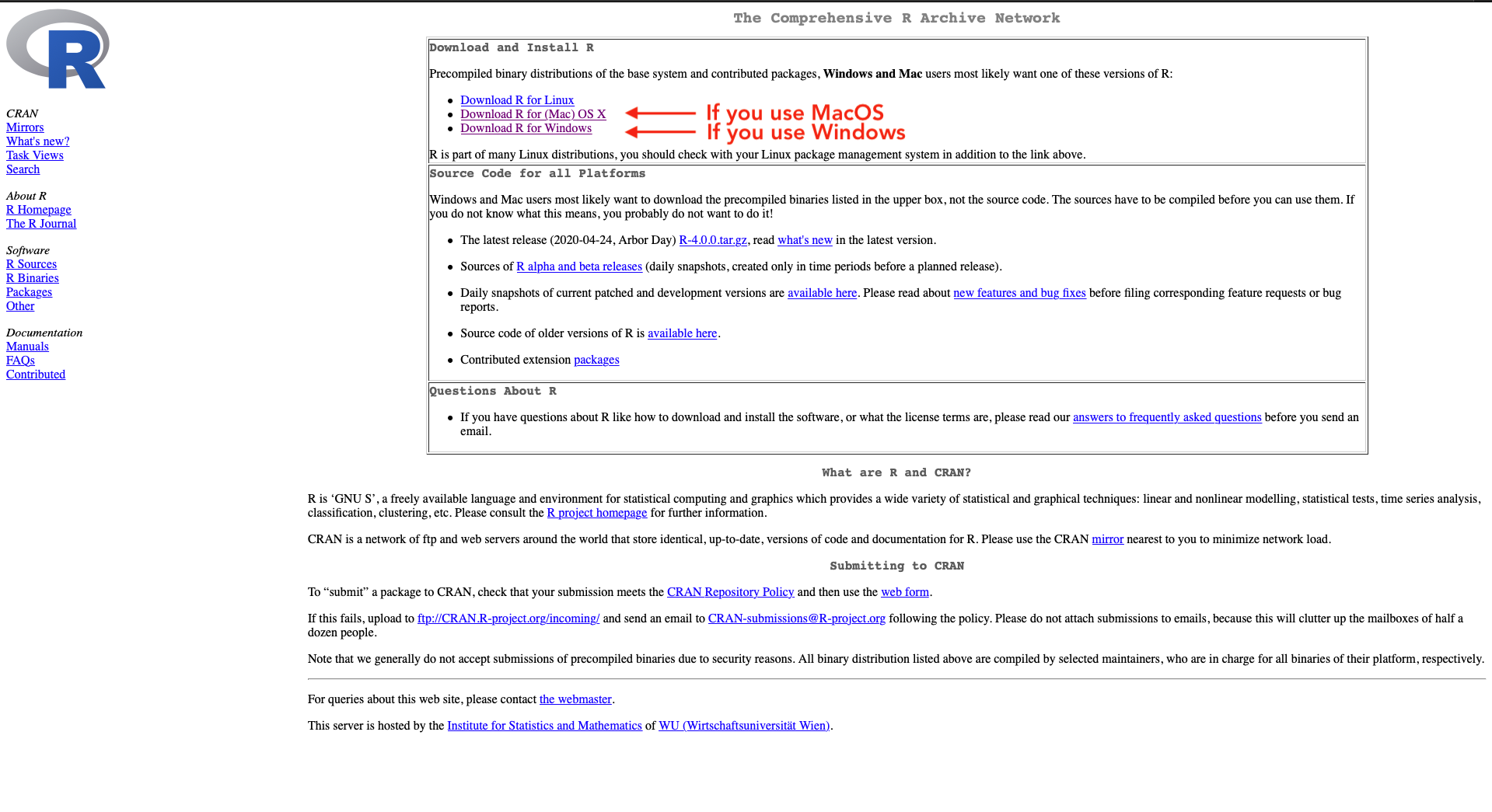
R for MacOS
When downloading R for MacOS, you’ll want to click the link for the
latest version of R: R-<#>.<#>.<#>.pkg where <#>.<#>.<#> represent
the major, minor, and patch numbers. As of the writing of this
document (May 2020), the latest version of R is R 4.0.0 — it may be
different (higher) when you download. Just grab the one inside the red
box.
You may be asked if you want to allow the download. If so, say yes and pay attention to where you save it (typically your Downloads folder). Once it has finished downloading, double click on the package icon and follow the default directions to install.
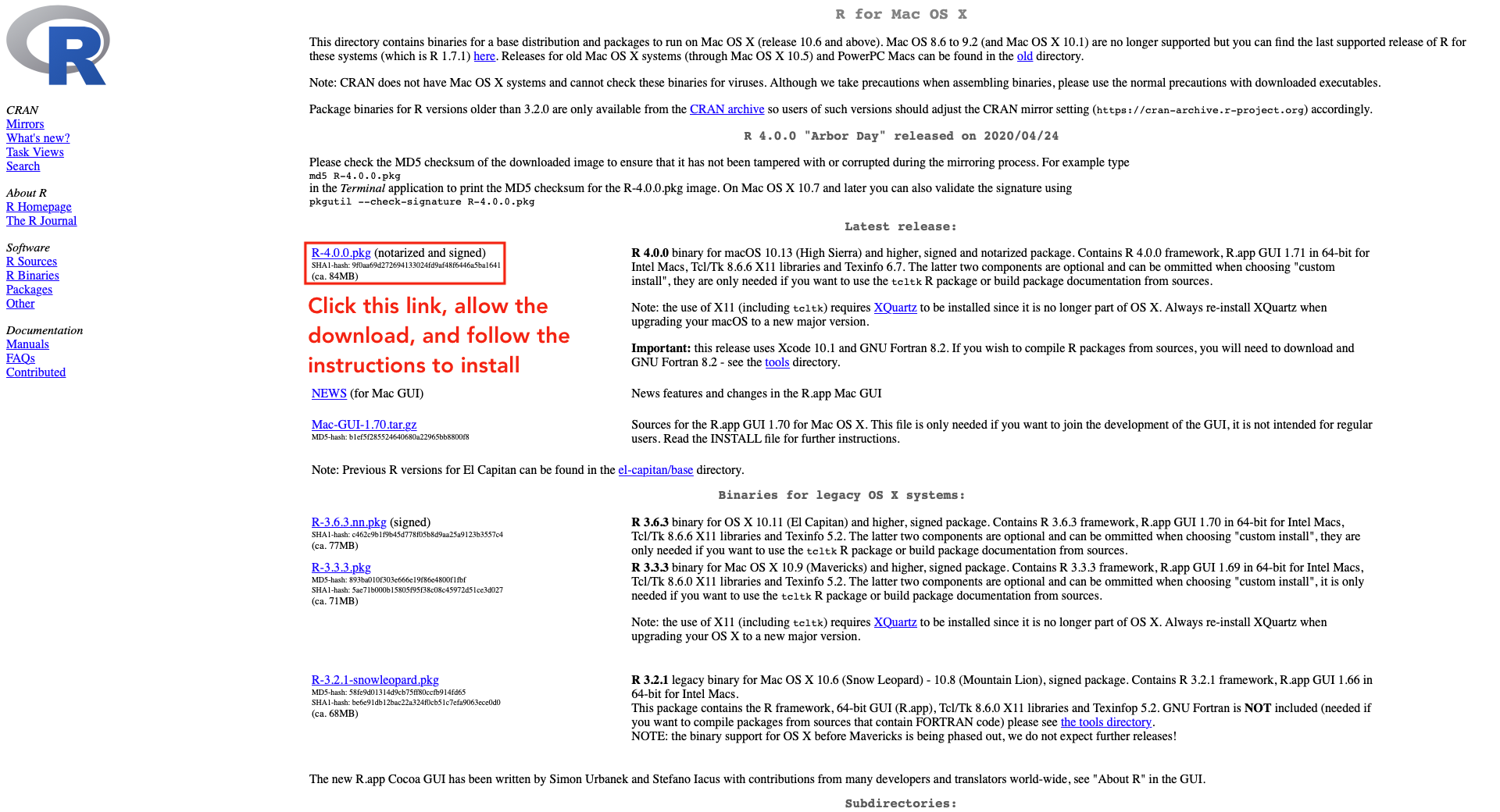
R for Windows
When downloading R for Windows, you’ll first be taken to an intermediate screen. Just click the indicated link to go to the next page.
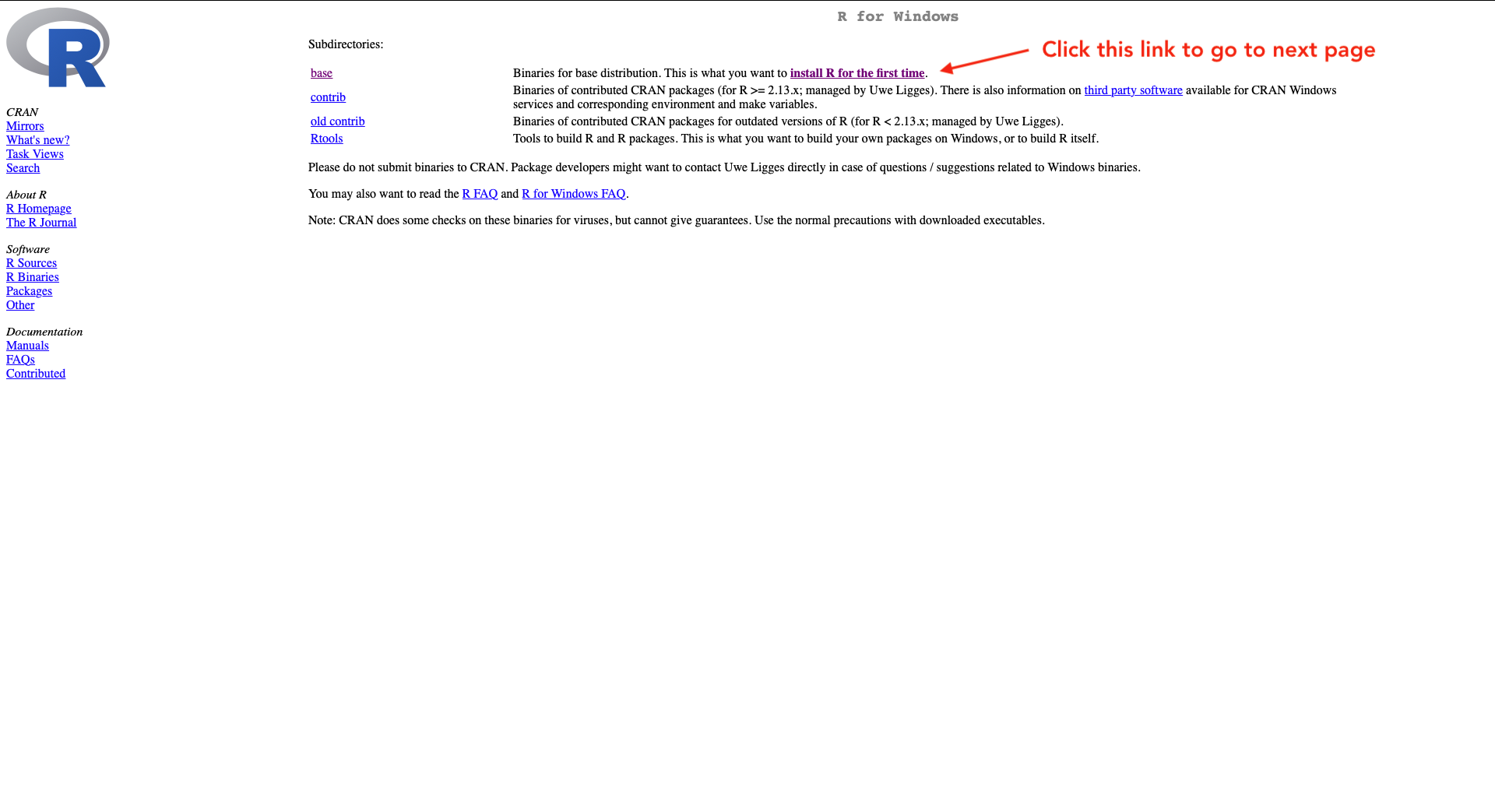
On the next screen, click the link to “Download R-<#>.<#>.<#> for
Windows” where <#>.<#>.<#> represent the major, minor, and patch
numbers. As of the writing of this document (May 2020), the latest
version of R is R 4.0.0 — it may be different (higher) when you
download. Just grab the one inside the red box.
You may be asked if you want to allow the download. If so, say yes and pay attention to where you save it (typically your Downloads folder). Once it has finished downloading, double click on the installation icon and follow the default directions to install.
Depending on the level of control you have on your computer and how you typically install software, you may want to install R as an administrator. I would recommend that to head off issues down the road, but if you don’t have administrator privileges then go ahead an install as a user.
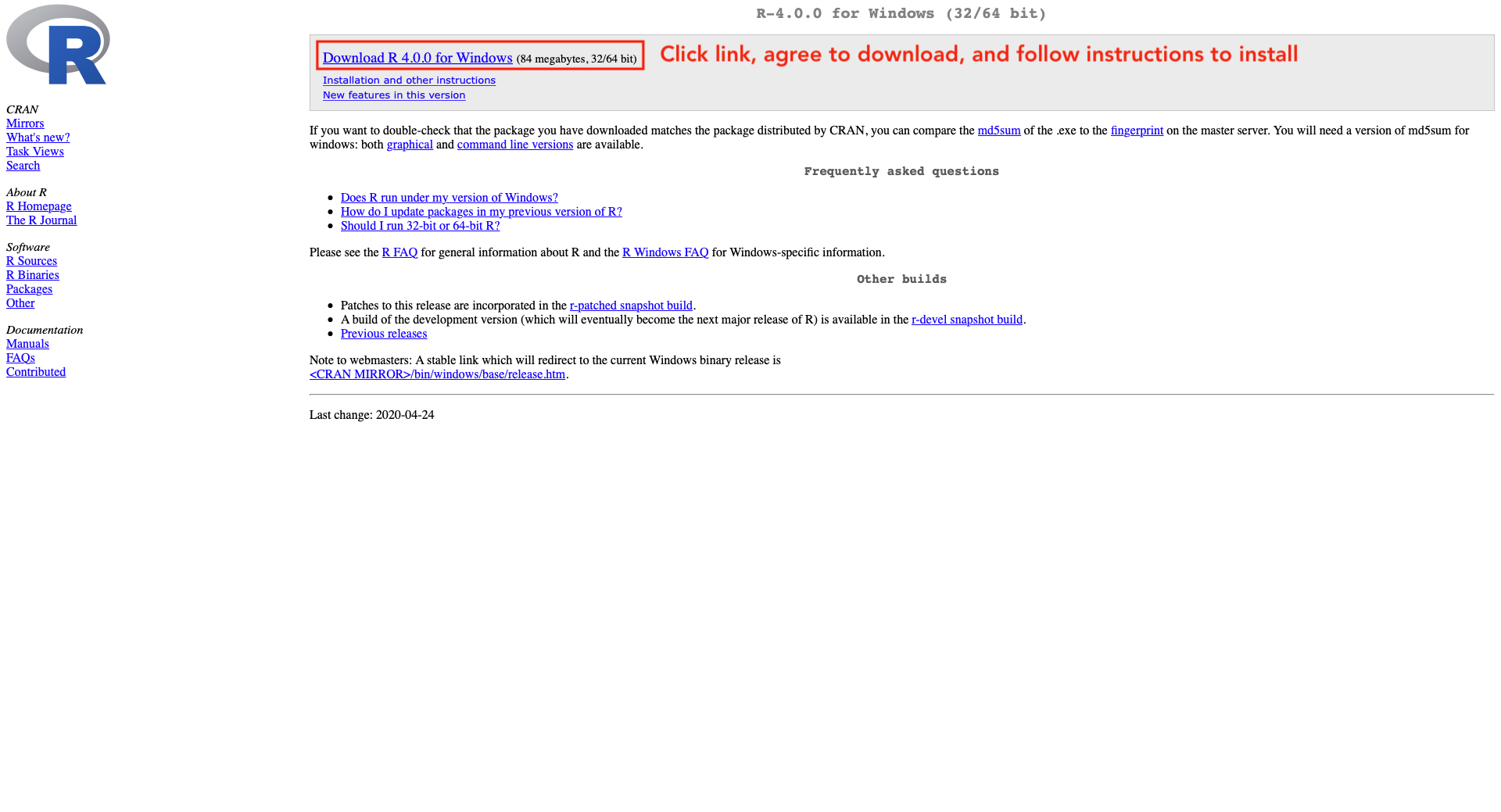
Installing RStudio
Now that you’ve installed R, it’s time to get RStudio, the program we’ll use to work with R. Start by going to the RStudio home page: https://rstudio.com.
At the very top, you’ll see a link to “Downloads”: click that.
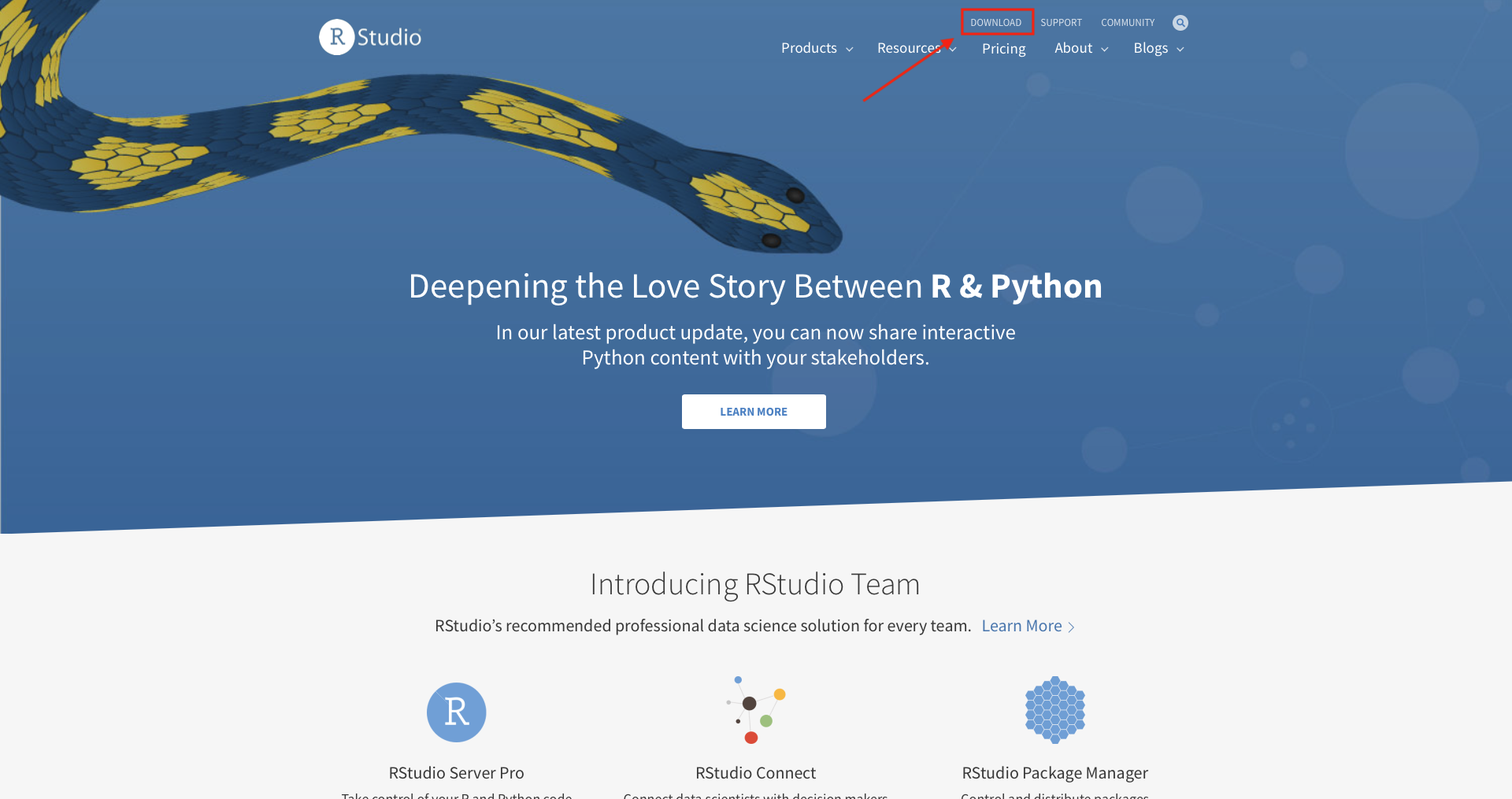
You’ll be presented with a number of versions of RStudio to install. We’ll choose the free desktop version (naturally!).
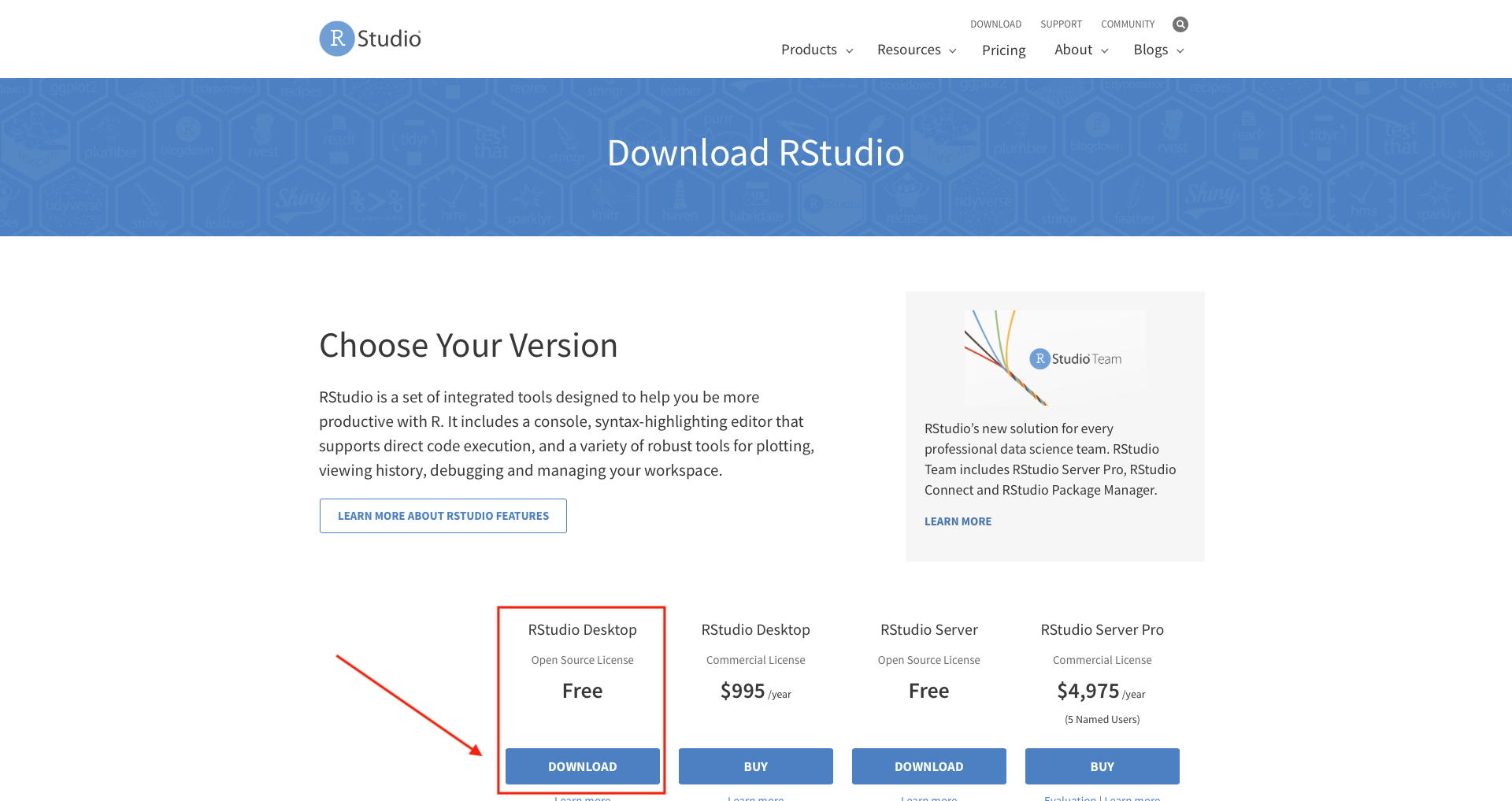
You’ll now see a button to download RStudio. Step (1) is to download R, but we’ve already done that so we’re good.
One thing: the RStudio website is smart and tries to guess your OS so that it can present you with a big button to download the correct version. As you can see, it worked for me: I’m shown a button to download RStudio for MacOS. If you go to the website on a computer using Windows, the button should instead be a link to install RStudio for Windows. If all works, then you can click the button either way (yours just may look different), download, and install as normal. If the button doesn’t have your correct OS, then go to the next step.
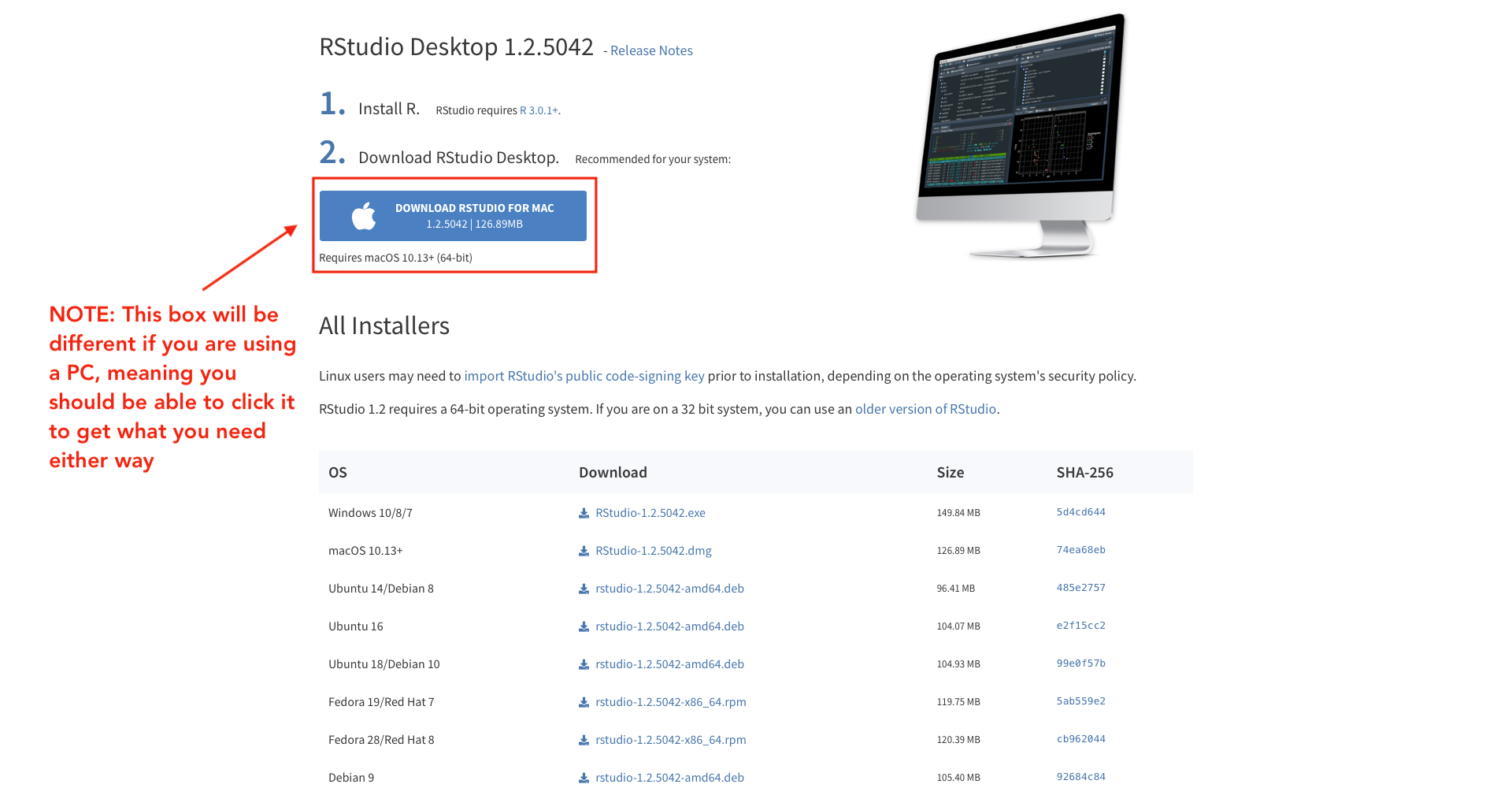
Just below the big button, you’ll see the full list of RStudio versions. You can also pick your correct version here. Same as before, just click the link, download, and install as normal.
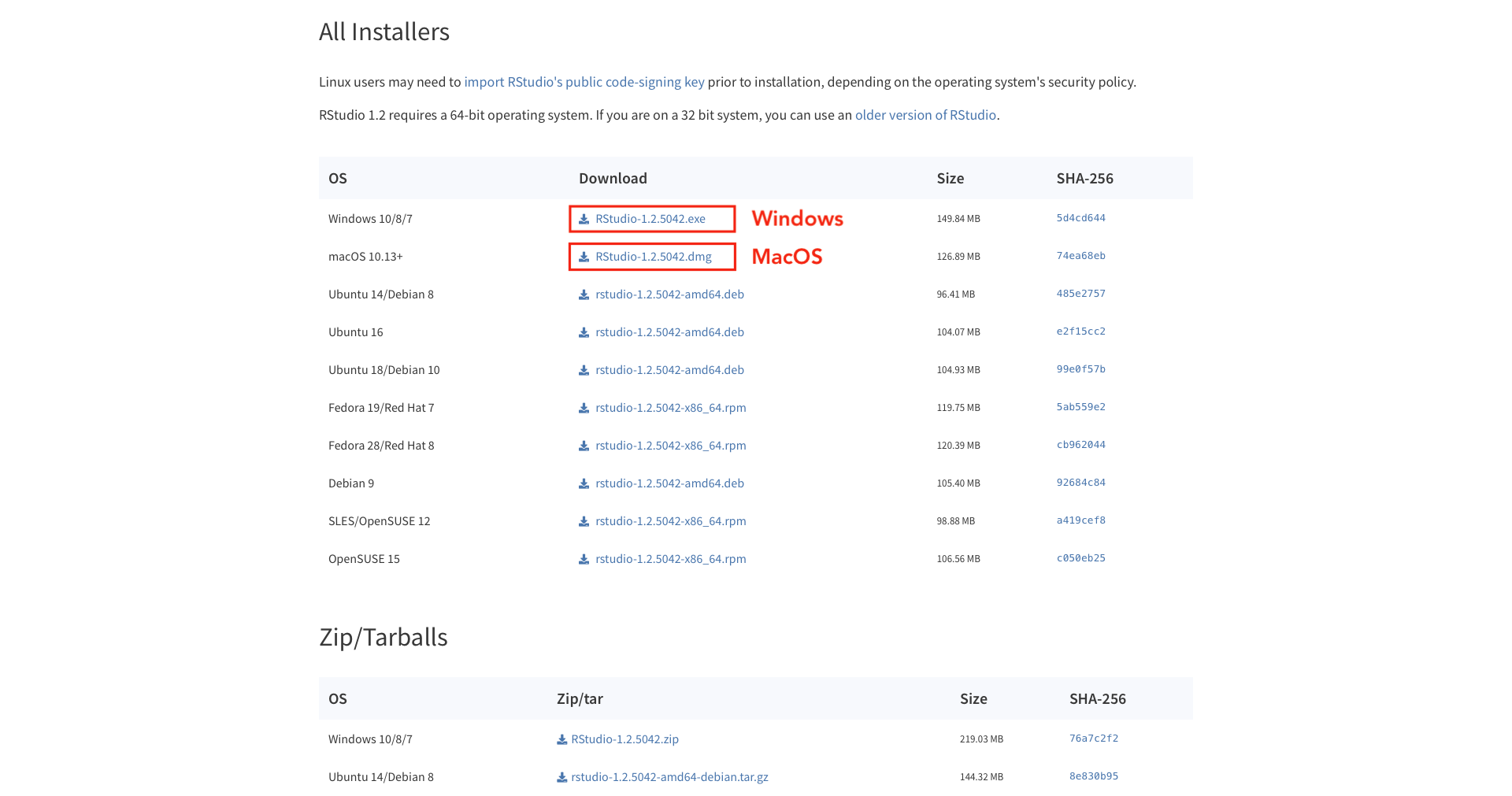
Installing git
There are two things you need to do to use git/GitHub in our course: (1) have an installation of git and (2) have a GitHub account. Rather than reinventing the wheel, I suggest following the instructions from Jenny Bryan.
NOTE As part of registering an account with GitHub, I recommend requesting an Education Discount so you can get free private repositories for future work.
Installing LaTeX
LaTeX is a document typesetting system/language. While it’s probably best known for its ability to nicely typeset mathematical equations, LaTeX works really well quantitative research workflows. That said, it can be difficult to install and work with.
We’ll use LaTeX later in the semester so that you can make nice PDF reports. The good news is that you won’t really need to interact with LaTeX at all to do so — other than to install it now.
Since you don’t need a full TeX distribution on your computer, you can most likely get by using the TinyTeX distribution that we can install directly from R. If you want a full version of TeX on your computer (NOTE: It’s very large), then skip to the full installation for your computer.
TinyTex
Once you’ve installed R and RStudio, open RStudio and type the following in the Console:
install.packages("tinytex")
tinytex::install_tinytex()
This will install the tinytex R package and then install the TinyTeX
distribution (it may take a minute or two).
OPTIONAL: Full installation
If you want the full installation, first go the LaTeX home page at https://www.latex-project.org.
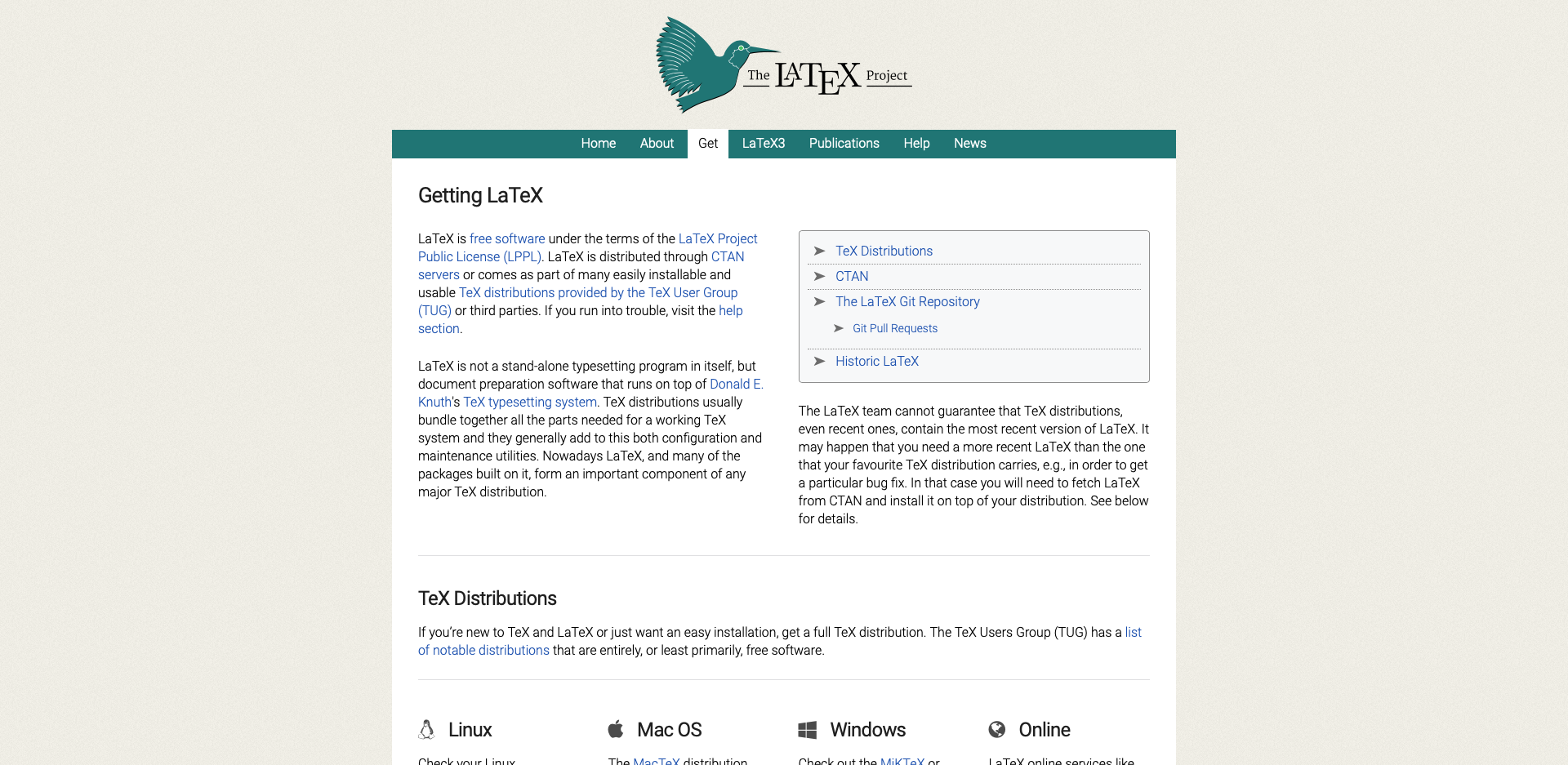
If you scroll down slightly, you’ll see options for MacOS (MacTeX) and Windows (MiKTeX) installations. Click the link that applies to your OS and follow the instructions below.
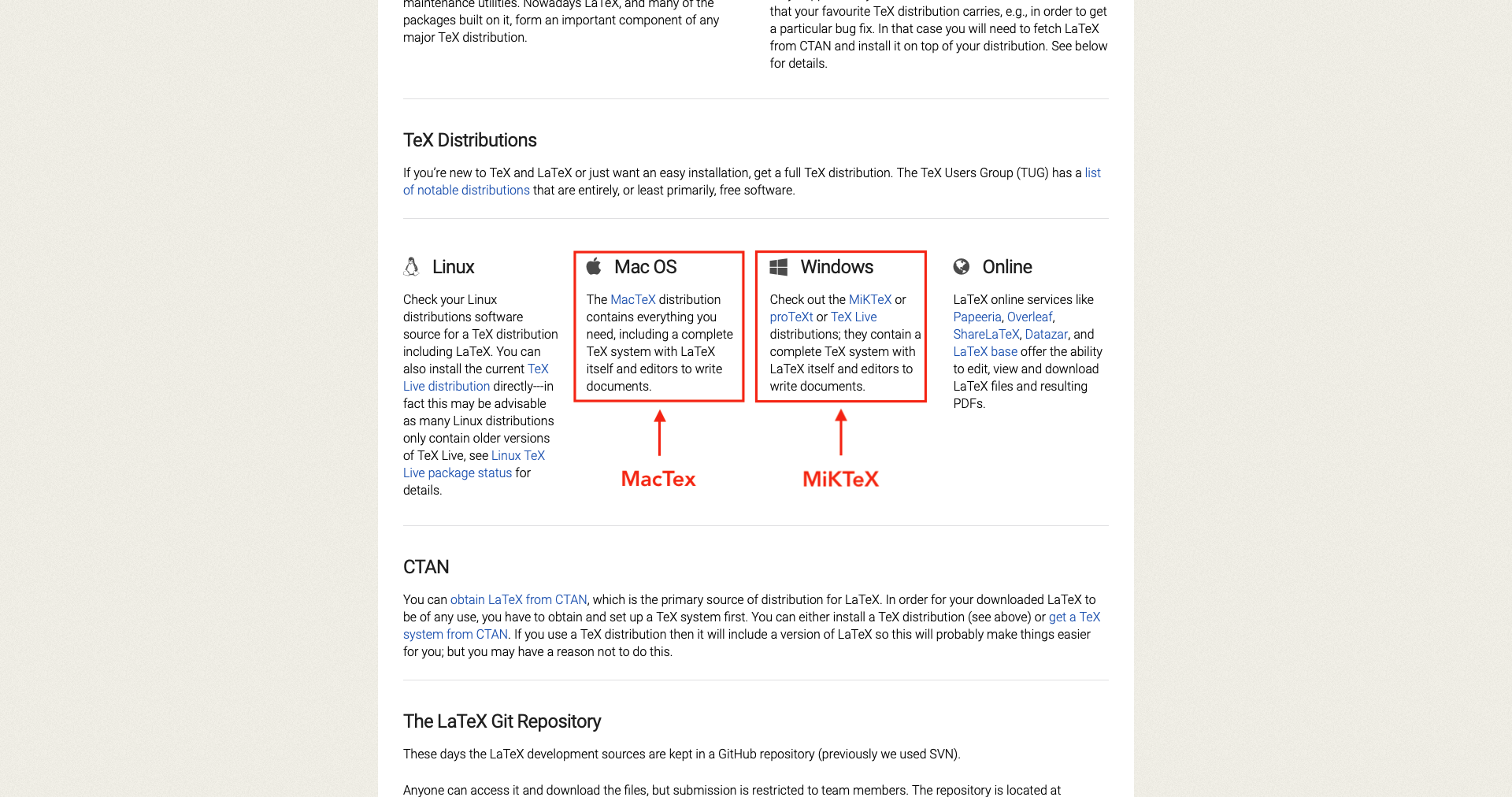
LaTeX for MacOS (MacTeX)
On the MacTeX home page, first click the link for the MacTeX Download.
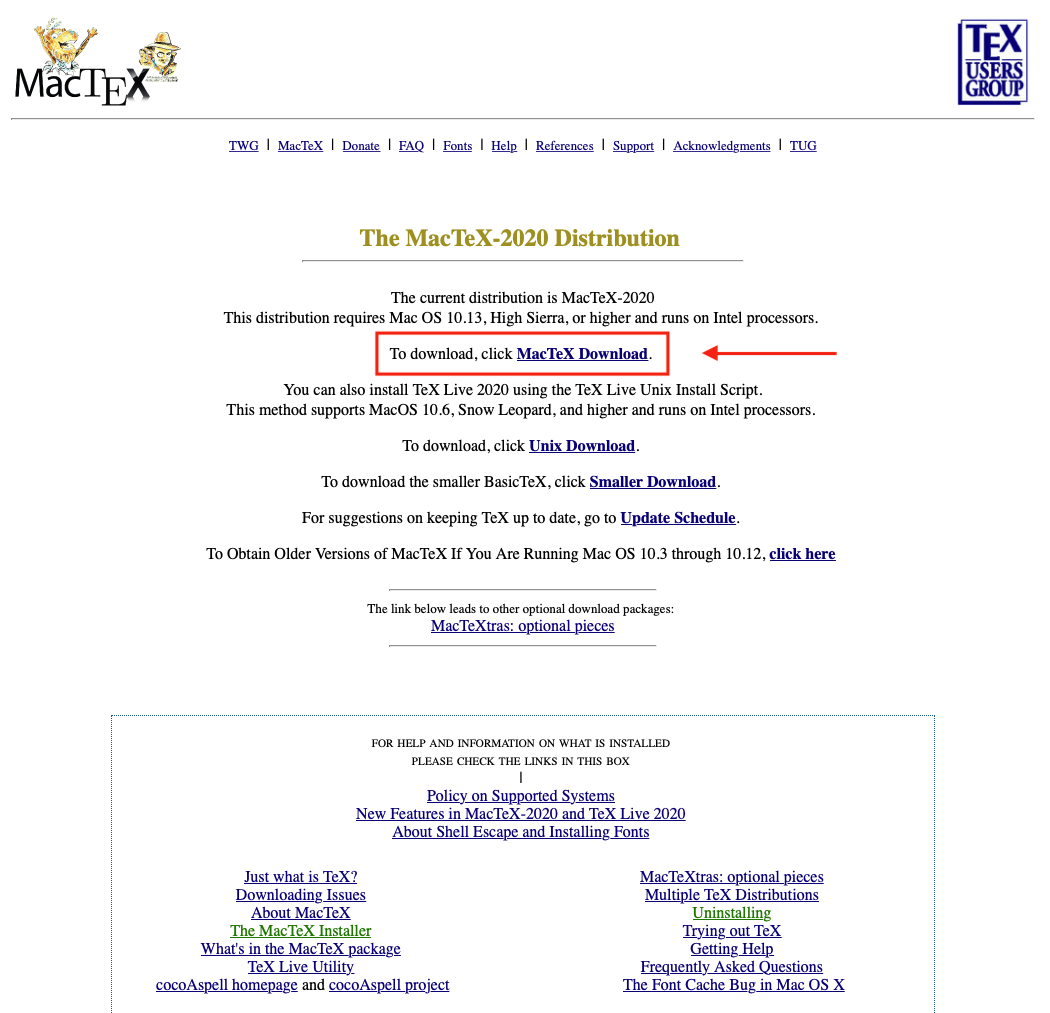
On the next page, click the link for MacTeX.pkg, agree to download, and then double click on the downloaded file to install. Note that this package is very big (~ 4GB) because you are downloading just about everything TeX-related, including some software. It’s what I use, but I use TeX all the time. Just know this in case your storage space is limited on your computer.
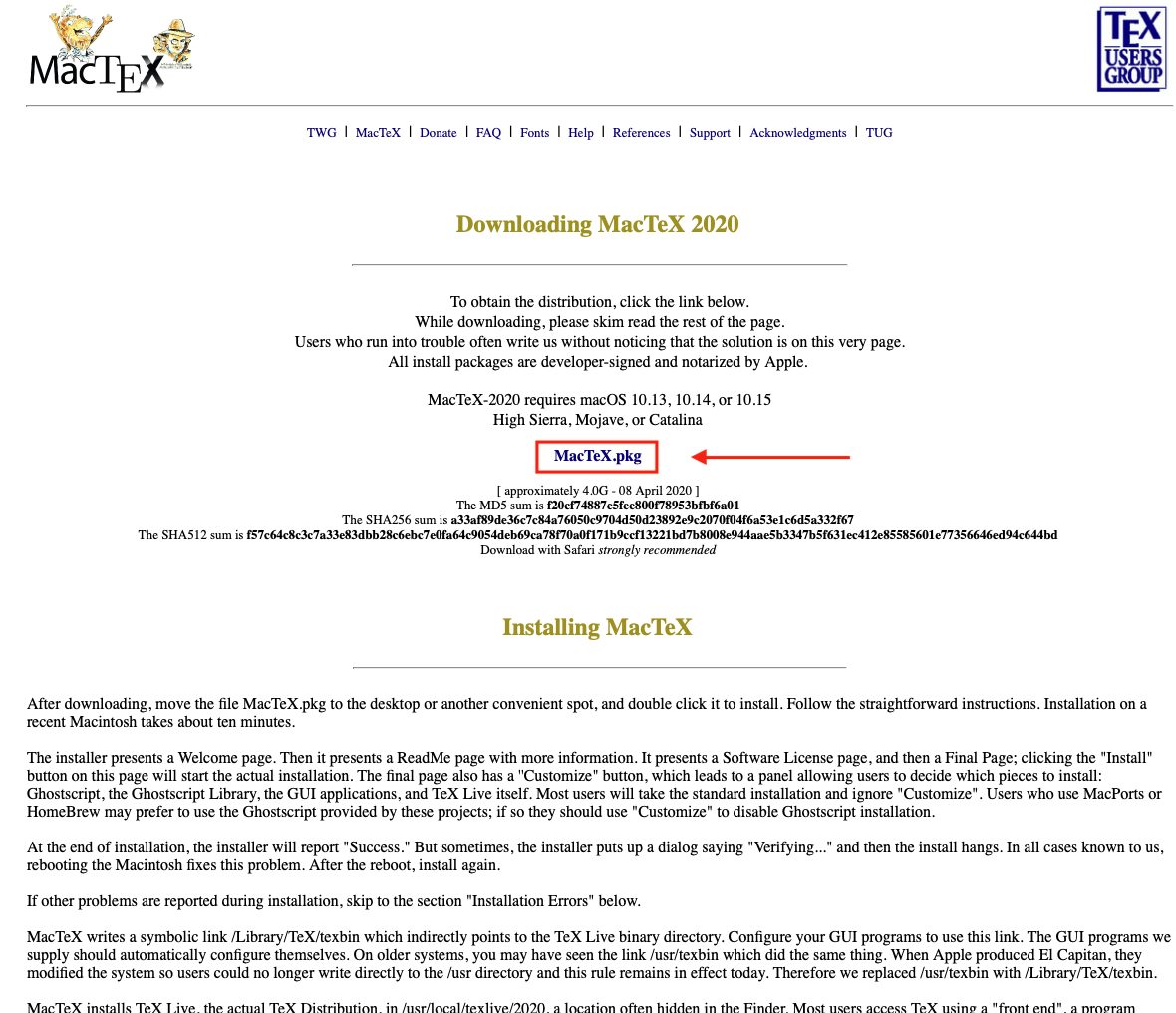
LaTeX for Windows (MiKTeX)
Once you reach the Windows (MiKTeX) homepage, click the Downloads link at the top of the page.

On the next screen, you’ll want to click on the blue “Download” button, agree to the download, and then install.
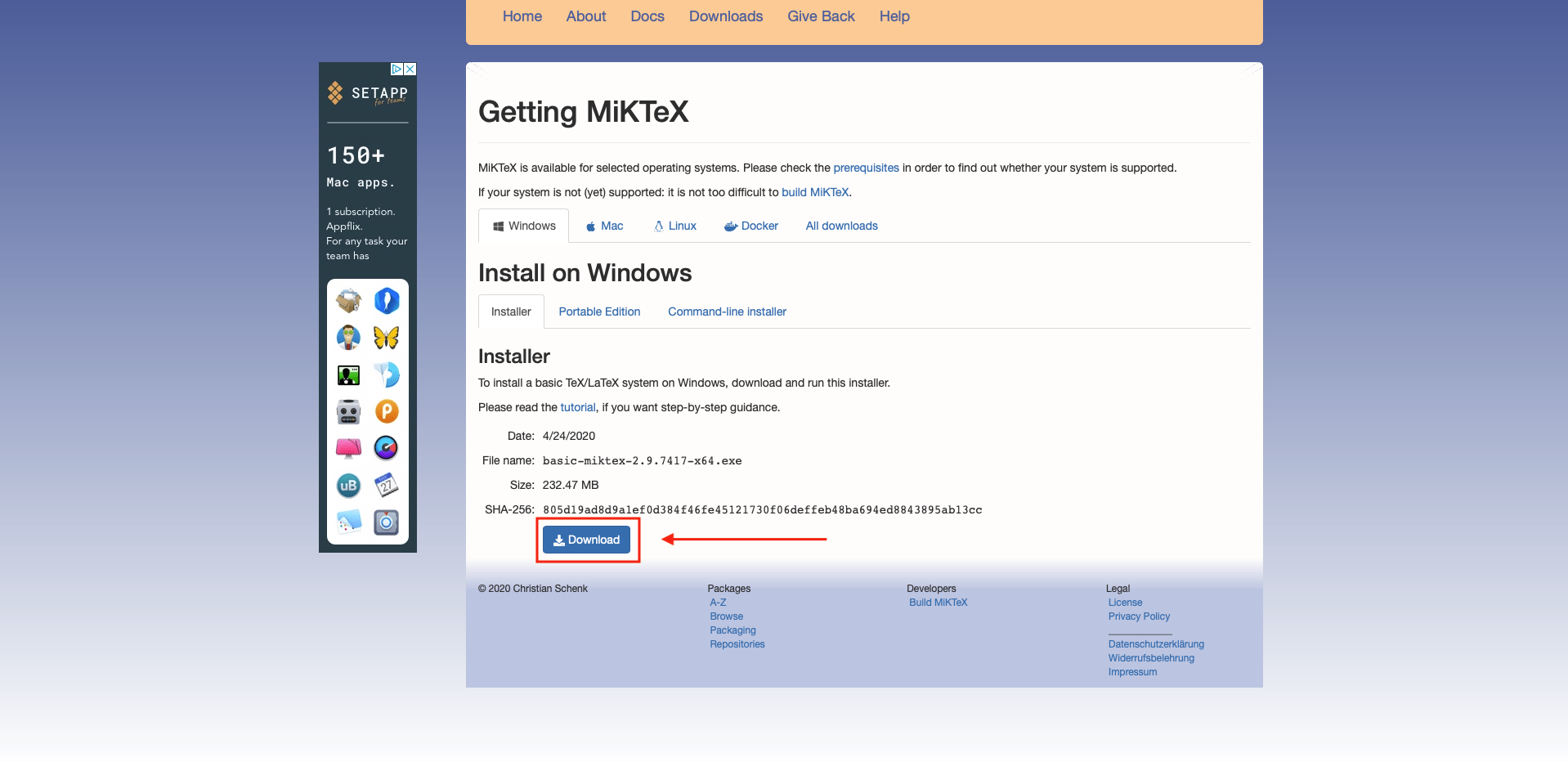
ONE NOTE MiKTeX is much smaller than MacTeX, but that’s because it doesn’t download everything. Instead, it opts to only install packages as you need them. Cool, expect that doesn’t always work well with RStudio.
The fix is this: when going through the installation, on the
“Settings” screen, be sure to change the default selection for
“Install missing packages on-the-fly” from "Ask me first" to
"Always". Continue the installation with the other default options.
